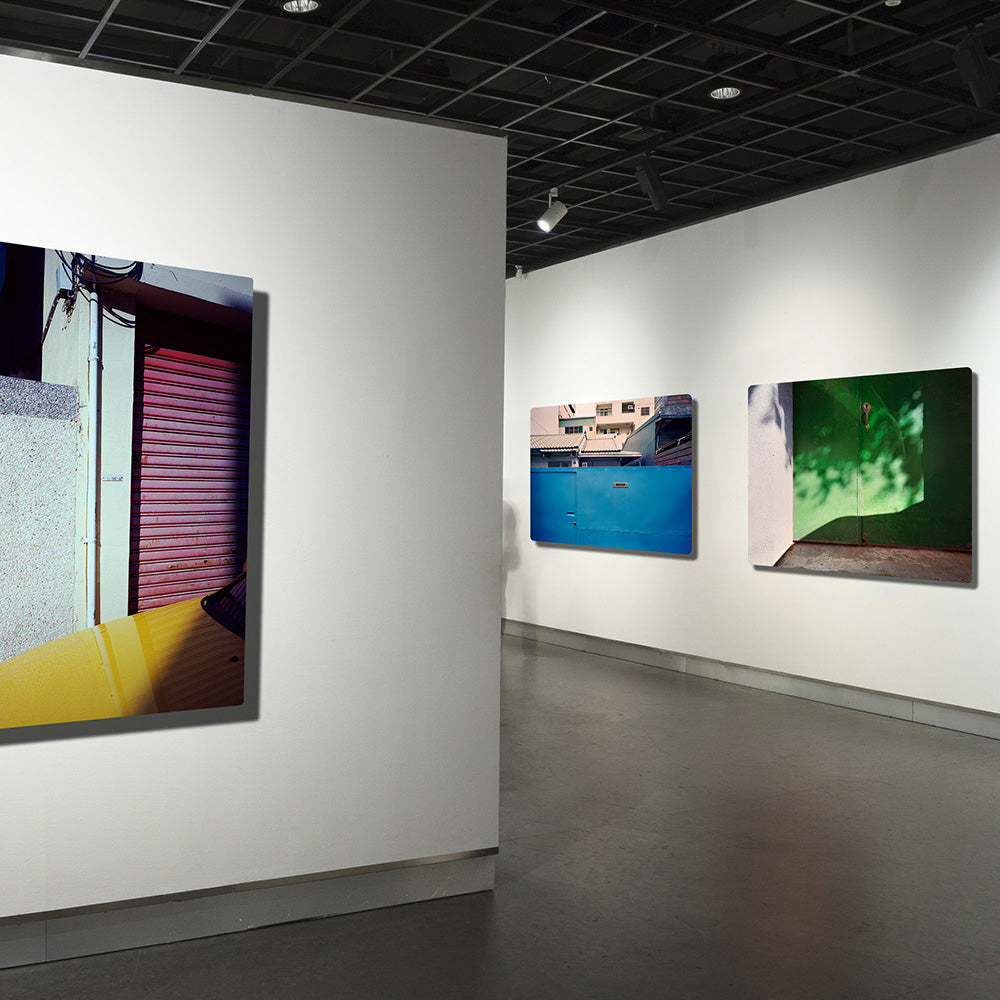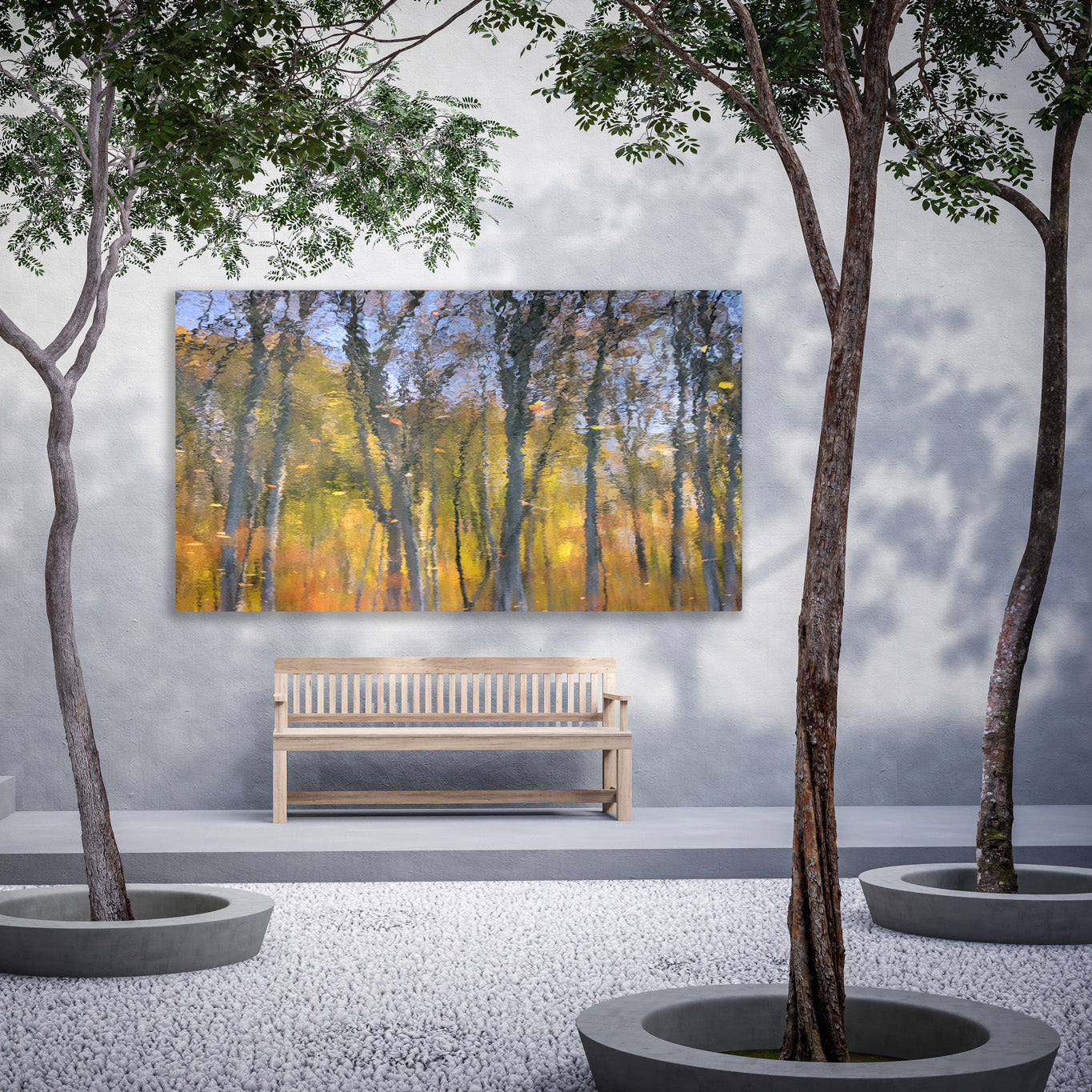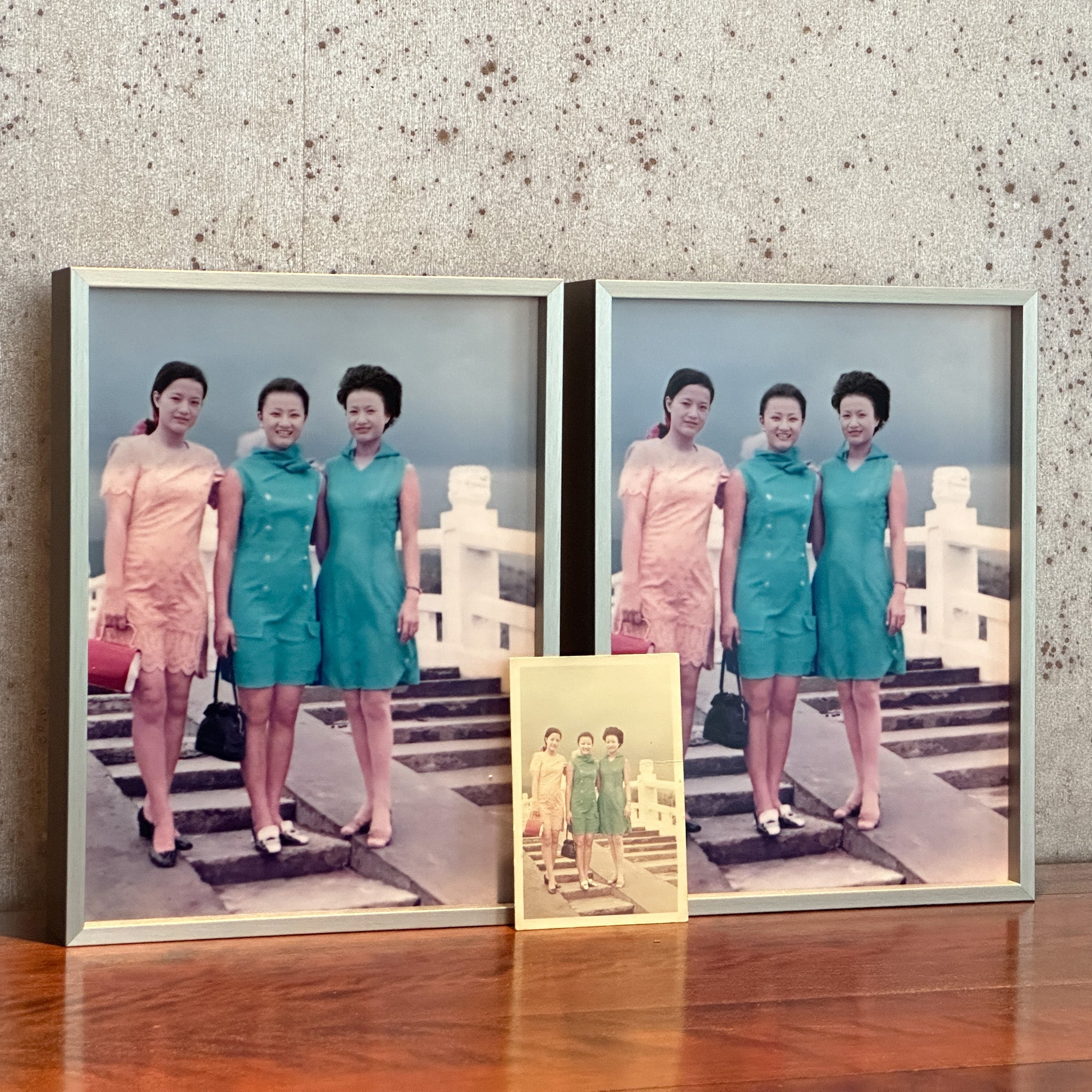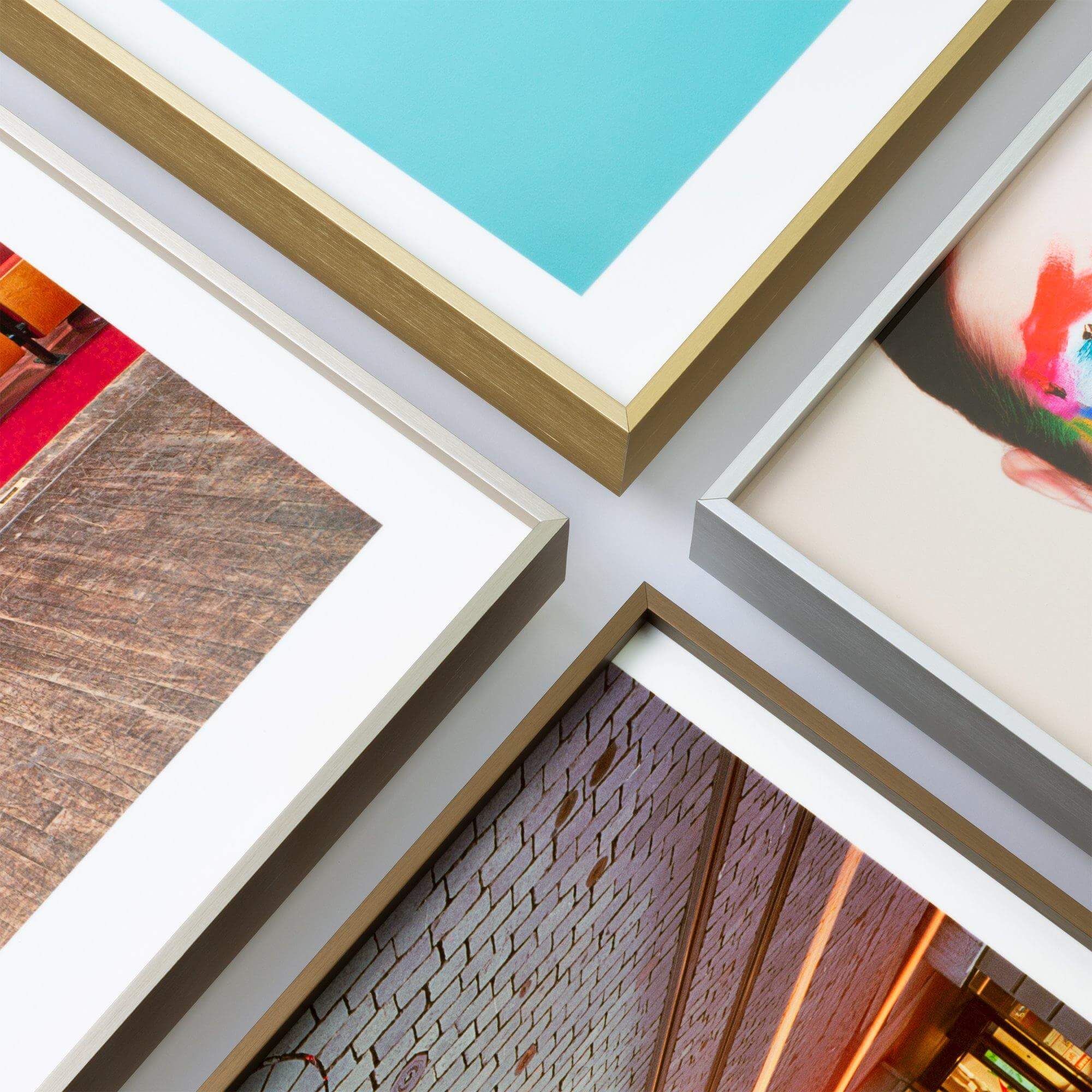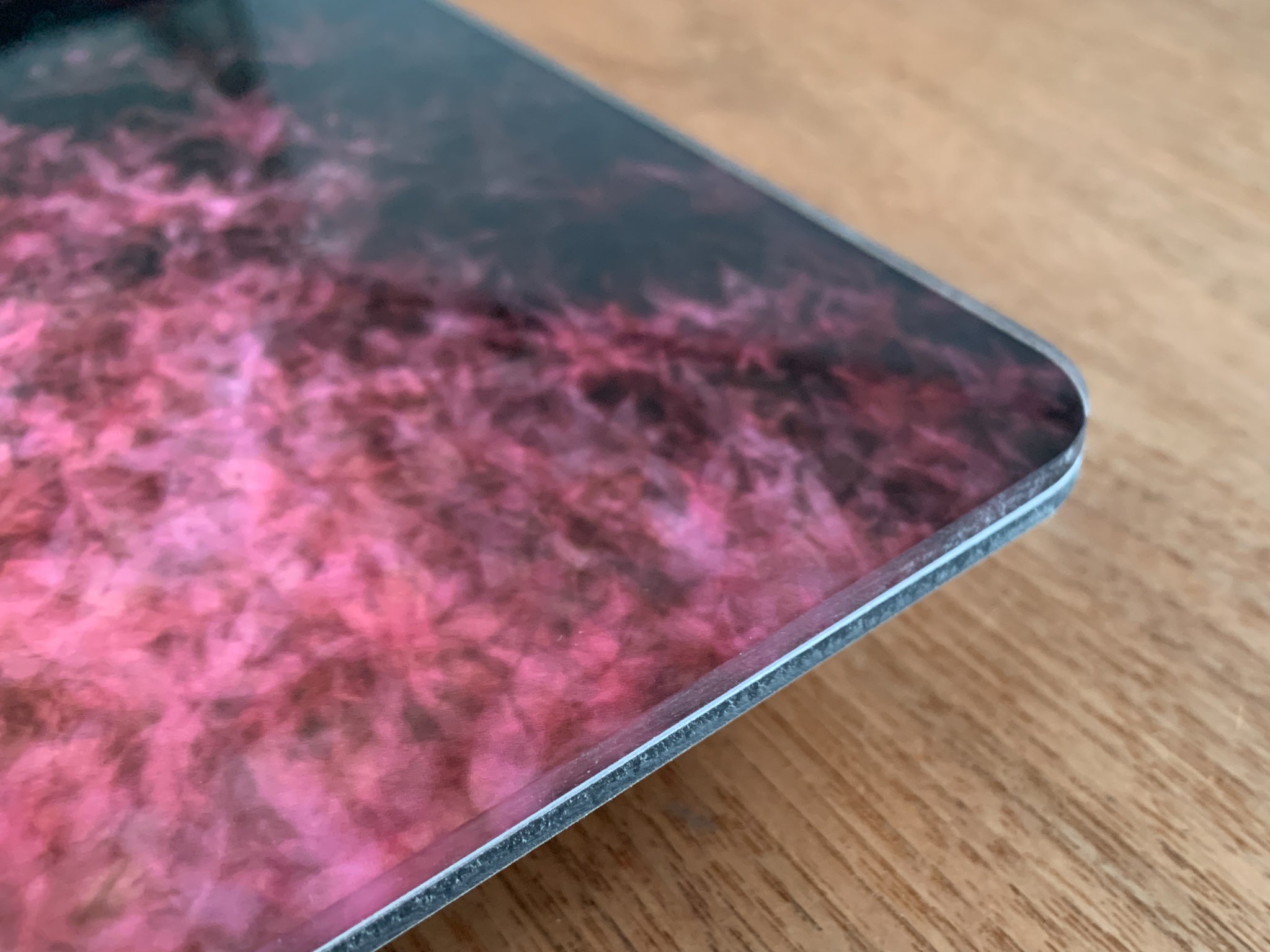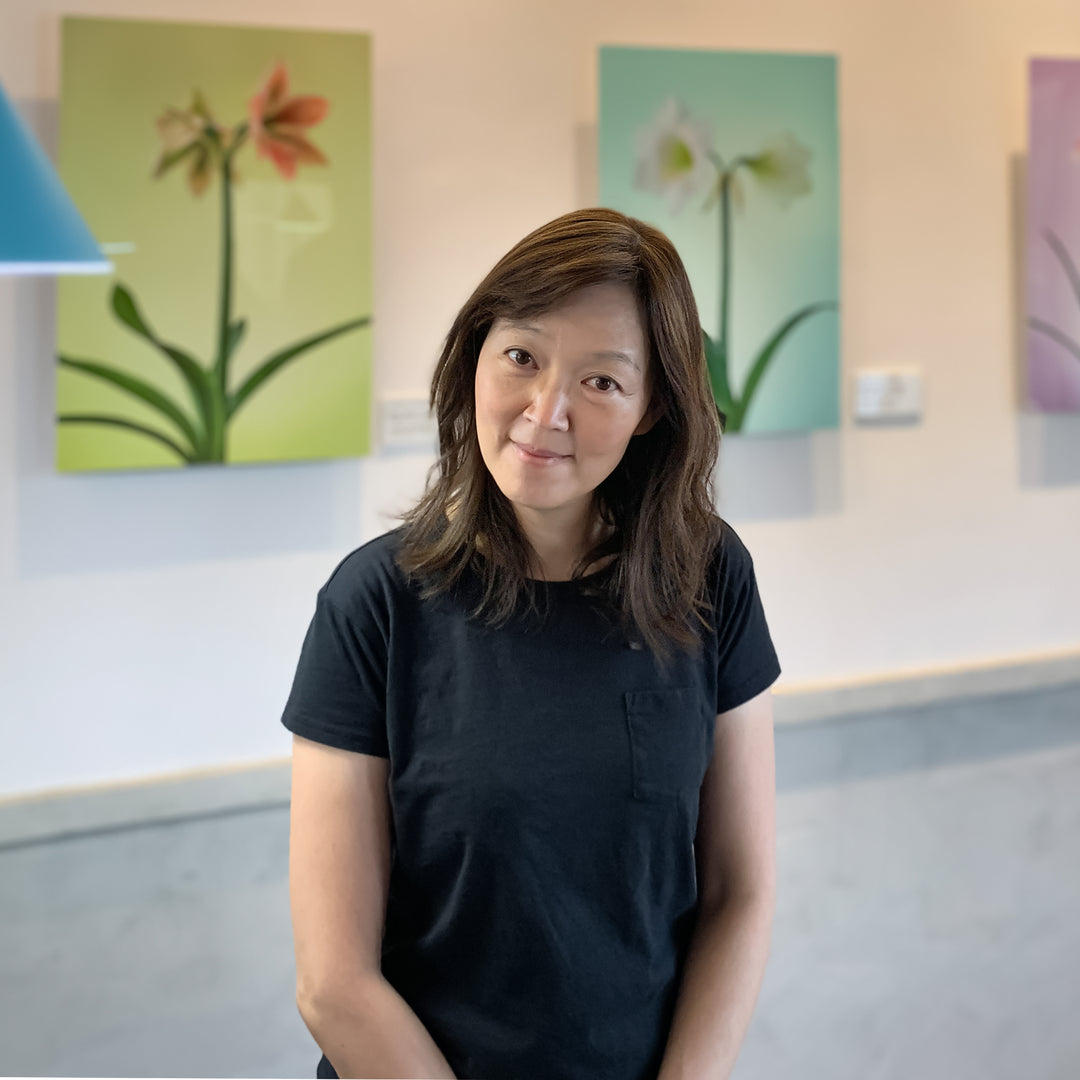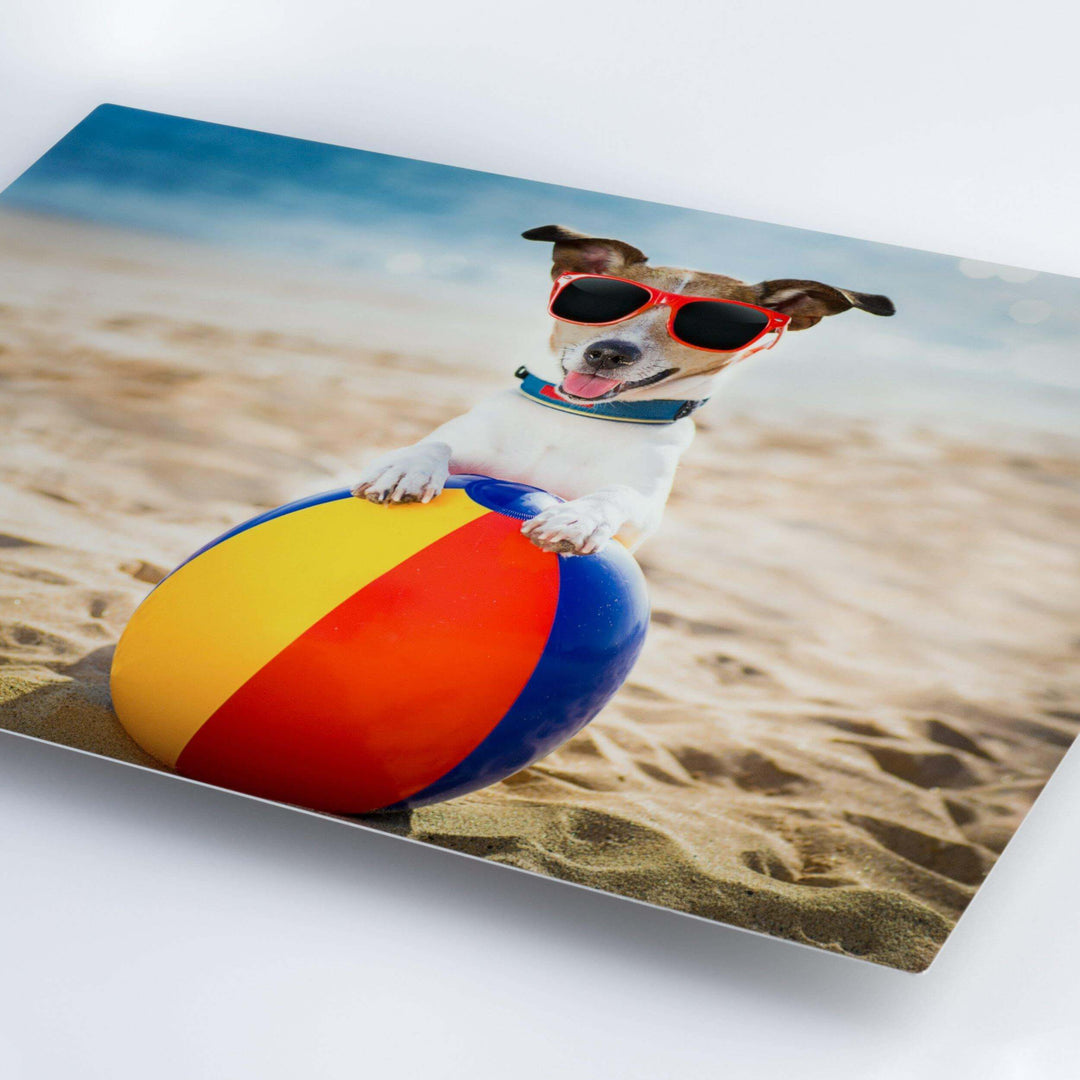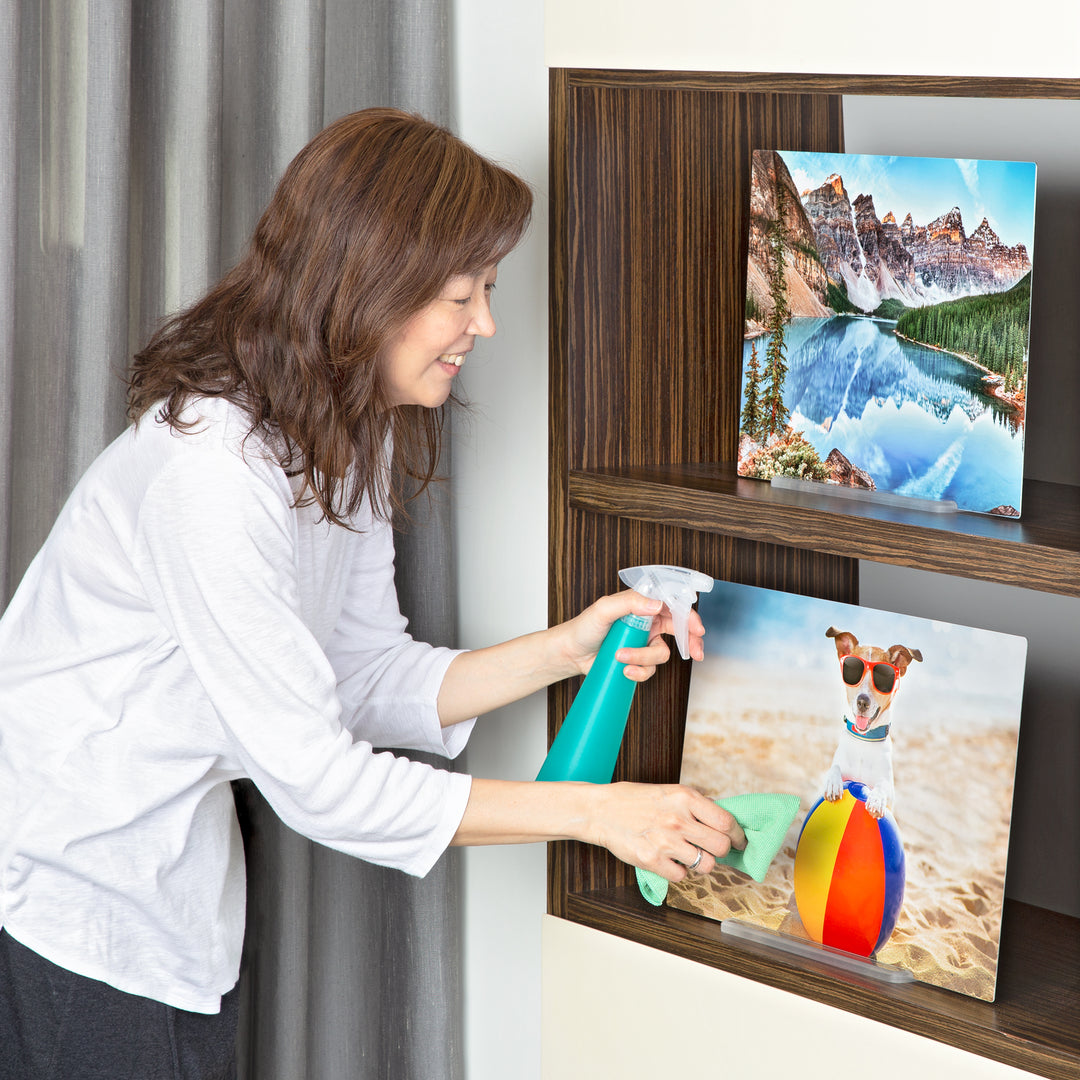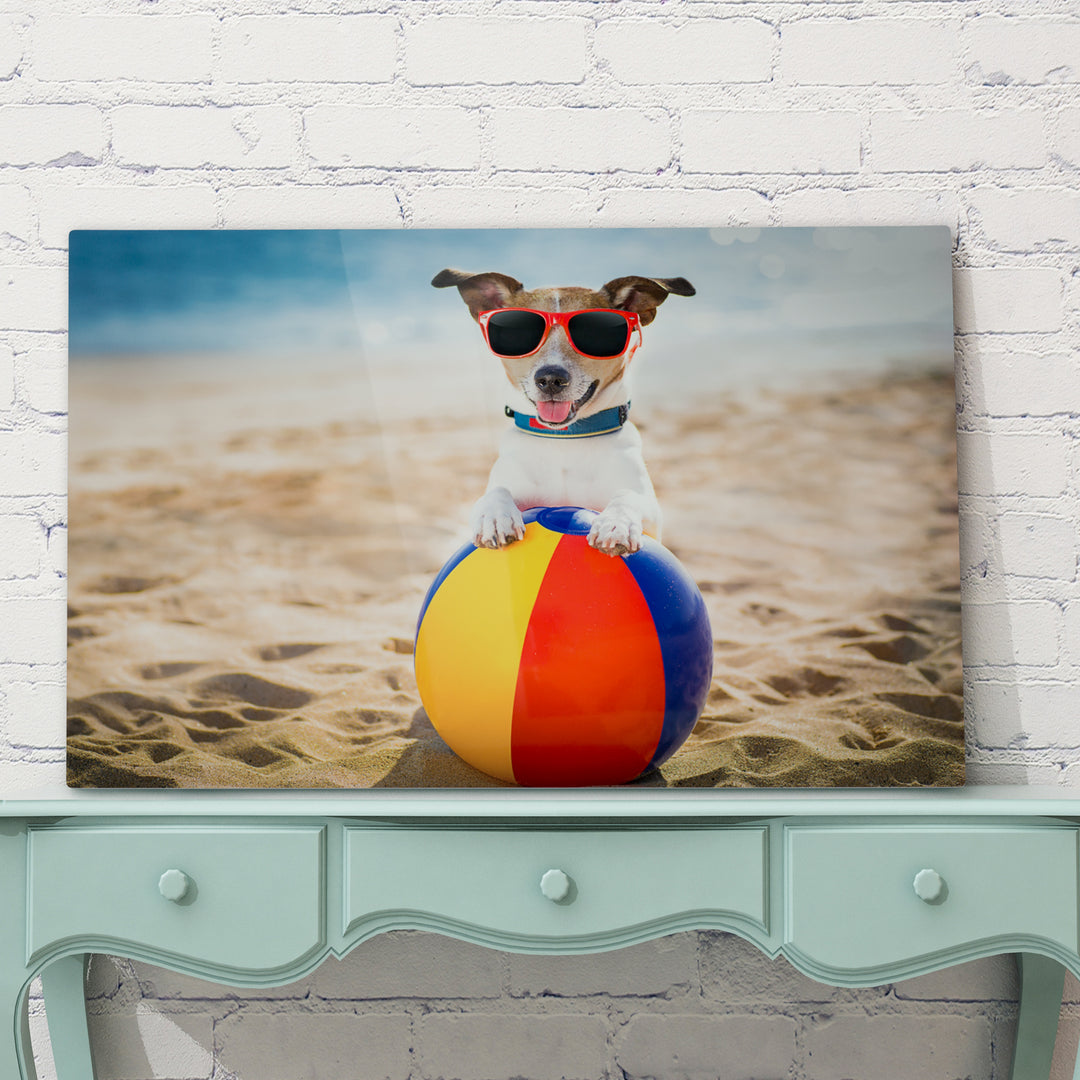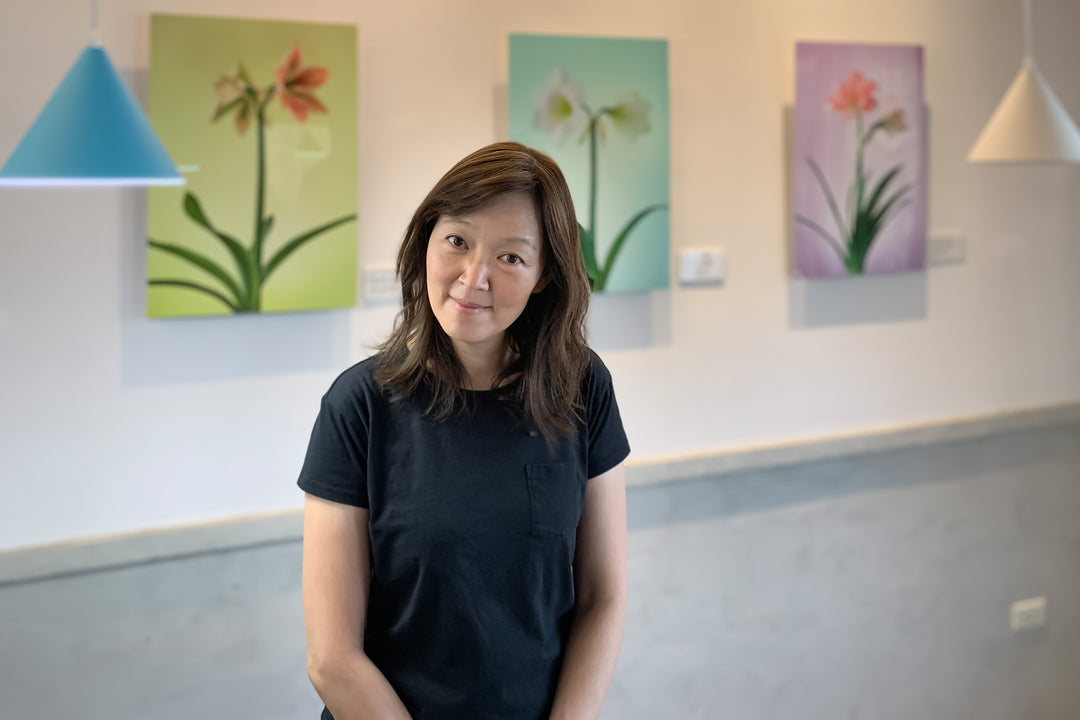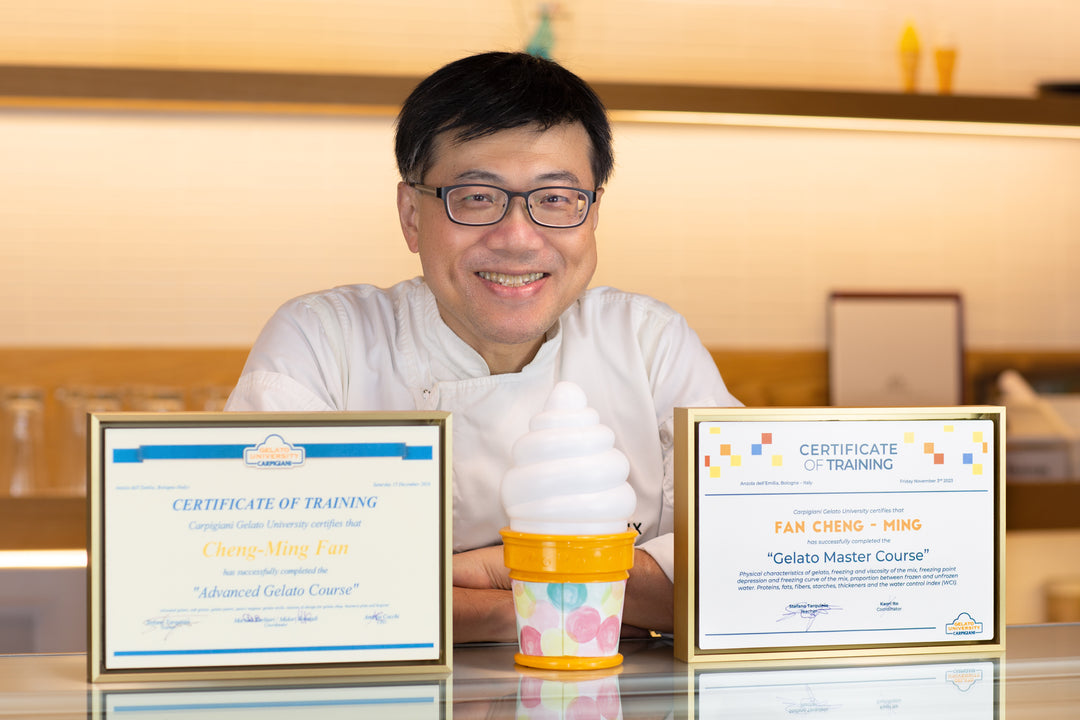Many people who first encounter ChromaLuxe metal photos, besides being amazed by the vibrant colors and 3D effect, also turn over to the back to wonder about the framing method. Our metal photos utilize aluminum sheets combined with aluminum frameless backings. These lightweight and flat photos display a vibrant effect without the need for additional front treatment or framing.
Many people exclaimed, "This is like a super-light version of crystal mounting!" Crystal mounting (Diasec) is a patented technique that adheres transparent acrylic to the surface of photographic paper, and is widely favored by international photography masters.
Although we do not provide crystal framing services , let us now learn about this framing technique that is very popular in the international and Taiwanese markets: Diasec!
A video about crystal mounting by Diasec
The video above introduces the Diasec method. The time and content are as follows:
- 0:28 What is crystal mounting?
- 0:48 The beginning of crystal mounting
- 2:00 International master Andreas Gursky is also a fan of crystal mounting
- 2:45 Things to note when ordering crystal mounting
- 3:40 Crystal mounting is a patented technique
In addition to the above video, we will also provide detailed text explanation of crystal mounting Diasec so that those who are interested can better understand it.
Diasec ® Introduction and production process
What is Diasec?
Crystal mounting (called Diasec® in English) is a professional mounting technique that uses highly transparent acrylic (PMMA, polymethyl methacrylate) to bond to the front surface of the photo. The final effect is that the work Colors are more vivid and details are sharper. Artwork is typically presented in a high gloss finish and contains UV protection to extend the life of the image.
This technique, originally developed by Swiss inventor Heinz Sovilla-Brulhart, uses a disposable, permanent adhesive to bond a photograph to acrylic. A layer of aluminum-plastic is then added to the back of the work for further structural reinforcement. Due to acrylic's high light transmittance (approximately 90%-92%) and excellent refractive index, the resulting effect produces exceptionally vivid colors and exquisite detail, a fact that has earned it adoration among many photographic artists.
In Taiwan, this technique is commonly known as crystal mounting. It is loved by photographers and art collectors and has become the preferred mounting method for showing modern and simple styles.

Diasec® patented technology and production process
Diasec uses liquid gel instead of transparent adhesive film to bond the image to the acrylic glass without bubbles.
- The back panel is usually made of aluminum, or transparent acrylic is used to achieve a backlight effect.
- Diasec gel has UV filtering function, is chemically stable, and can withstand temperature and humidity changes, but the process is irreversible and the image cannot be repaired after the acrylic is damaged.
Diasec® is a patented process developed by Diasec-Support BV in the Netherlands. To become a Diasec® certified framer, you must complete professional training and master the following:
- Special adhesive formula : This is the core secret of Diasec®, which ensures long-term preservation of images without bubbles or degradation problems
- Professional equipment and technology : Each process requires the use of special equipment for precise operation
- Quality Control : All mounting technologies must undergo rigorous testing and verification before they can be used in commercial activities under the Diasec® name.
Currently, no framing companies in Taiwan have passed the Diasec® certification. Therefore, the so-called "crystal framing" in the Taiwanese market is a non-patented technology and cannot guarantee the same effect and durability as regular Diasec®.
International Applications of Diasec® Crystal Mounting
The Diasec® technology has been used on the international market for many years and many well-known photographic artists, such as Andreas Gursky, have used this technique to present their works.
For example, his renowned 2001 work , "99 Cent II Diptychon," was created using the Diasec® process and measures three meters tall by two meters wide. This work sold at auction in 2017 for over $3 million, becoming a classic example of the integration of Diasec® crystal mounting technology and art.
Wikipedia also records that Diasec samples made in the 1970s showed almost no color shift, the white remained pure, and there was no sign of acid attack.
Diasec® Crystal Mounting Patent Status
You may not know that Diasec® is a patented mounting technique. Diasec's patent has expired, however, many alternative techniques still do not work with genuine materials and equipment.
In 2009, the Dutch company " Diasec Support BV " was established to provide training and customized equipment, with materials supplied only by original Swiss manufacturers. To become a Diasec® certified framer, you must apply and complete professional training to master the following:
- Special adhesive formula : This is the core secret of Diasec®, which ensures long-term preservation of images without bubbles or degradation problems
- Professional equipment and technology : Each process requires the use of special equipment for precise operation
- Quality Control : All mounting technologies must undergo rigorous testing and verification before they can be used in commercial activities under the Diasec® name.
Reference: Diasec Wiki
Reference: 99 Cents Diptych No. 2
Discussion on the non-patented crystal mounting method
Because Diasec® technology is restricted to authorized vendors, numerous non-patented methods have emerged, attempting to mimic its effects. In other words, while we often call it "crystal mounting" in Chinese, the vast majority of crystal mounting services in the international market are unofficial. Unlike the authorized Diasec crystal mounting method, these non-patented crystal mounting shops use other terms. For example, White Wall Photo Lab and Yellow Corner call it Photo Print Under Acrylic Glass, avoiding the Diasec name.
Because these techniques are developed by the shops themselves, the quality of the technology and quality can vary greatly, and problems can easily arise due to improper materials or operation. Common problems include the following two:
- Acrylic material <br>High-quality acrylic is usually made of new materials, while low-quality acrylic may use recycled materials, resulting in excessive impurities, affecting transparency and preservation.
- Adhesive problems <br>Adhesives with poor airtightness will cause bubbles to appear in the adhesive layer, affecting the appearance and structural stability.
When we ordered our crystal-mounted artwork in 2018, we had no idea how complex the process would be. A few years later, the artwork deteriorated at an alarming rate, its once-beautiful beauty gradually deteriorating and never regaining its original splendor. This experience left us deeply regretful, and we couldn't help but wonder how we could explain it to ourselves, our company, and even our collectors.
Due to insufficient preparation and a lack of thorough understanding of the technical details, I ended up wasting money and failing to obtain a long-lasting work. Therefore, we strongly recommend that before ordering crystal mounted works, you must do your homework, carefully inquire about the mounting details, and choose a professional and reputable store to avoid repeating the same mistakes and leaving regrets!

Things to note when ordering crystal mounting
To avoid quality issues, it is recommended to ask the following details before ordering crystal mounting:
- Acrylic sheet : Is it a brand new material? Does it have high light transmittance?
- Adhesive quality : Is it a professional adhesive with good airtightness?
- Sharing of past implementations : You can ask the store about the preservation status of past works to understand their technical stability.
Comparison between crystal mounting and metal mounting
Compared to crystal mounting, metal prints are known for their lightness and durability, making them suitable for long-term display and excellent preservation. Metal prints achieve a vibrant, three-dimensional effect without the need for acrylic or aluminum-plastic panels, while also being durable and fade-resistant. For displays requiring lightweight and easy installation, metal prints are a more cost-effective option.
However, because crystal mounting uses artistic micro-sprayed photo paper to print works, the overall details will be clearer and the work will be more delicate. If the fineness of the work is the biggest consideration, we believe that crystal mounting will be a more suitable choice.
Conclusion
Diasec® is a high-end technology for photographic and art framing, but due to patent restrictions and varying material quality, caution is advised when purchasing. We recommend thoroughly understanding the technology and reputable vendors to ensure your work retains its originality and maintains its optimal visual quality.
I hope this detailed analysis can help you better understand crystal mounting techniques and their applications, so that you can make the most suitable choice when ordering works!
Finally, we would like to emphasize again that we are reporting this article with the spirit of researching media materials. We do not have any business related to crystal mounting !


